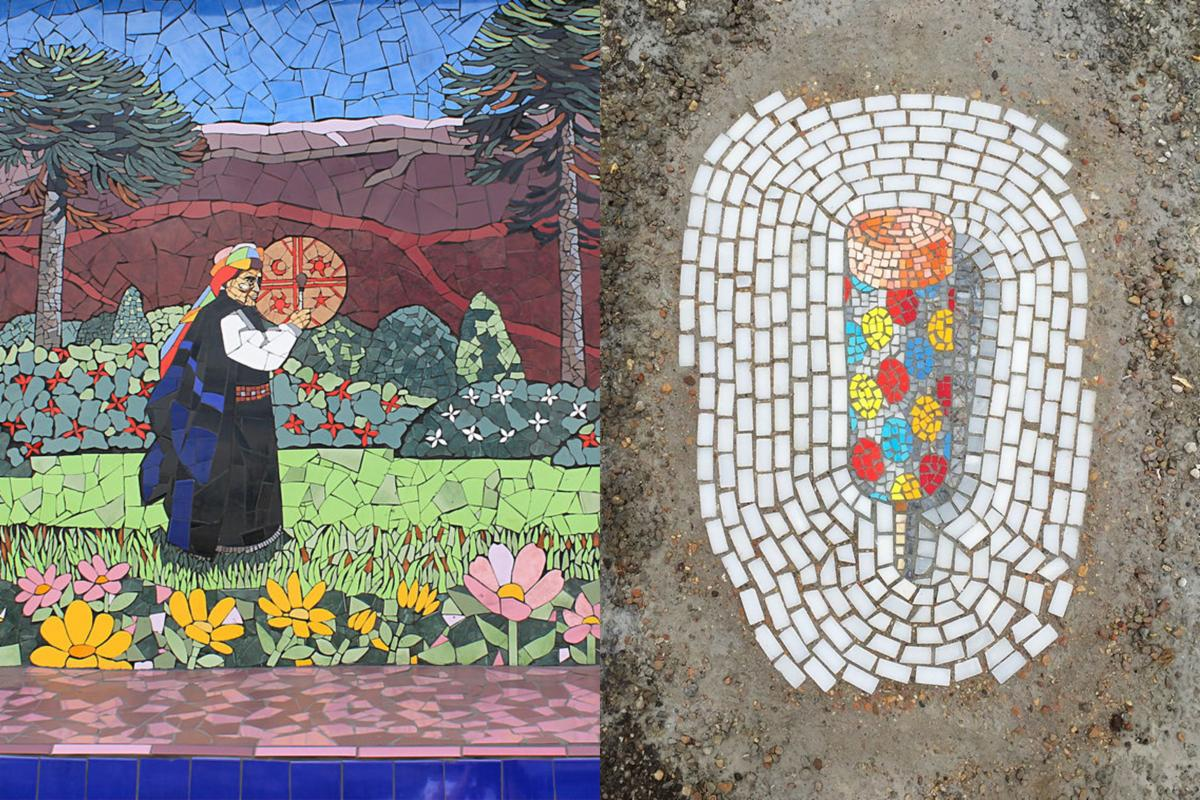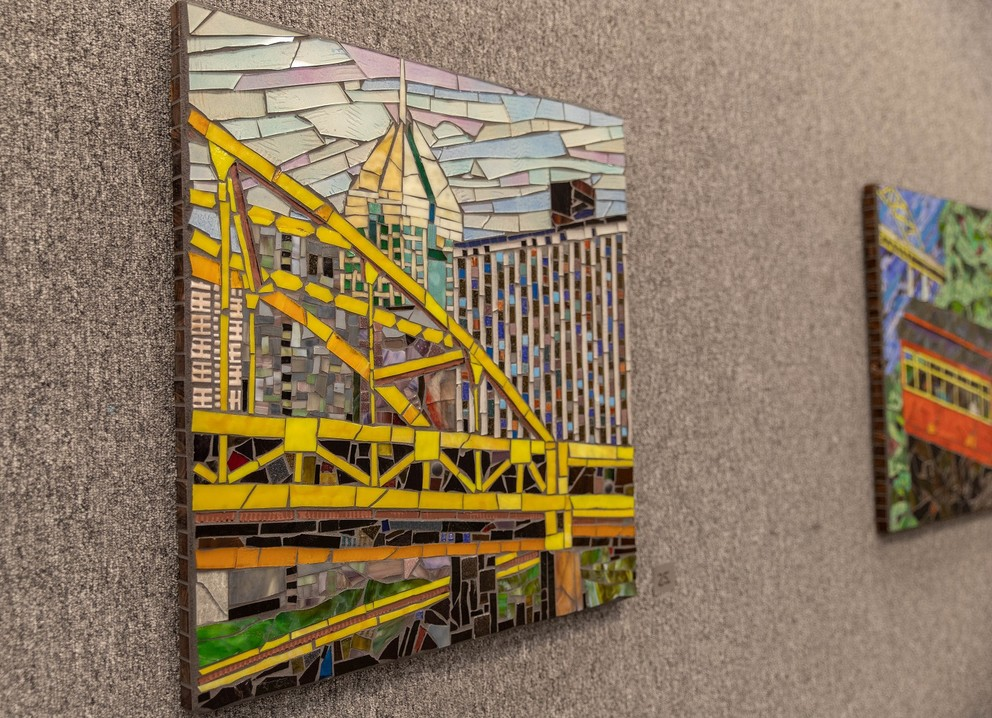8 Reasons to Hire Professional Glass Mosaic Artist in 2021
2021.10.16 / By hqt
The standard way of rolling the floor is a very important job for Glass Mosaic Artist before tiling for any project. So how is the background rolling technique correct and standard? Check out the details in this article!
What is a Glass Mosaic?
Glass Mosaic is the process of spreading a smooth layer on the surface of the floor to prepare for tile lying, which can be a layer of concrete or a layer of reinforced concrete or a layer of sand.
Requirements when rolling the background
- Before smoothing, make sure the foundation structure is stable
- Surface is flat, free of dirt, check for stains
- Brush off moss and grease stains
- Between the screed and the dry substrate, good adhesion must be ensured
- After polishing, water and roughen the surface
- If there is a lining, the squares with sides from 0 to 5 cm must be slotted for the floor surface, the distance between each cell is decreasing day by day.
Inspiring how to roll a standard foundation – the right technique
Whether the Glass Mosaic Artist after construction is durable or not is largely based on the lamination stage. Here is the standard lamination – the right technique for you to do:
1. Prepare before rolling the floor
- Comply with requirements on grading, rolling specifications, rolling thickness, etc.
- Clean the ground surface, chisel the cement mortar layer on the surface due to the process of building and painting (if any).
- For toilet areas or places frequently exposed to water, it must be treated with waterproofing and technical water testing before Glass Mosaic Artists.
- Moisten the background
- Apply oil slurry to create a bond between the Glass Mosaic Artist and the grout.
2. Standard steps of rolling the floor
Step 1: Restore the surface
- Restoring the standard height of the floor is the process of applying ink and restoring the standard height for the floor, the standard height is above 1 meter of plastered walls.
Step 2: Check the floor surface before rolling
- the background smooths?
- the height of the design correct, does the slope comply with the landmarks?
- the thickness of the rolled mortar layer guaranteed, is the mortar installed according to the manager's technique?
- Make sure the screed does not make mistakes such as: peeling, solid.
- If these criteria have been quality assured, then you proceed to lamination.
Step 3: Identify common errors during construction
- The Glass Mosaic Artist is peeling, blistering is caused by Glass Mosaic Artists with a dry lake, the floor is not wet, before rolling, do not water to moisten the concrete floor.
- There is a clear phenomenon, even cracking of the floor. The reason is because the level of mortar is not correct, the sand is not carefully laid, so there is still dirt that makes the floor surface not flat.
- The rolling floor level is not equal or not flat. The main reason is the wrong leveling, not adjusting the appropriate height.
Step 4: Process the pipe (the last stage of grouting).
- Cover the foundation with 2 layers and then check the water settlement to start implementation.
- Keep water condition for 48h.
- Plug the drain in to create a dam or small dike on the floor to limit water flow out of the membrane area.
- Continue to soak in water to a depth of about 100mm.
- Check the water level once every 8 hours, keep it at a stable level, neither too much nor too little.
- While testing to check water, care should be taken to avoid evaporation and water run-off from within the area where the waterproofing has been performed.
Step 5: Evaluation and acceptance of the Glass Mosaic Artist project
- Flat rolling surface.
- The Glass Mosaic Artists ground surface is at the design level, the slope in the places where the slope is needed is guaranteed as required.
- The mortar layer ensures the correct thickness and grade of mortar (graded) according to technical requirements.
- The mortar layer is solid, not flaking.
Why should the floor be rolled before laying tiles?
The process of rolling the tiled floor will take a lot of time and effort to perform, but the constructor cannot be ignored.
- When not rolling the floor, the brick will be laid directly on the concrete floor, without any cement sand lining. Meanwhile, the expansion coefficient of reinforced concrete floors is much smaller than that of floor tiles.
- When there is an impact from the sun, the brick will absorb heat and expand (at this time the concrete floor has not yet bloomed) so the brick will be bricked, until a certain time there will be no room to bloom. must be pushed up to cause the brick to swell.
- The base screed acts as a buffer and helps to absorb some of the heat from the tiles.
- The floor Glass Mosaic Artists will help the floor be flat, offset the rough areas from which the floor after paving is also flat. Both ensure aesthetics and ensure safety, without uneven steps.
- Increase adhesion, bonding between the floor and tiles.
- Prevent water from seeping into the concrete slab.
Should I use Glass Mosaic Artist?
In fact, residential buildings will be used for a long time, usually 40-50 years. Moreover, the demand for beauty is always enhanced, so the details and equipment in the house are always paid attention to aesthetics. Therefore, to know whether to use semi-porcelain or not, it will be based on 2 criteria: quality and aesthetics.
1. Ask Glass Mosaic Artist About quality
According to Glass Mosaic Artist, Semi-porcelain tiles meet the durability requirements corresponding to the average period of use of the house.
2. Water absorption
This water absorption is calculated based on the holes in the capillaries of the brick (which is the space between the molecular particles). This consistency is determined by the production process with the stages of mixing, pressing, drying, heating... and also the material.
Conclusion
The stronger the capillary bond, the lower the ability to absorb water. In which, bone and porcelain tiles have extremely low water absorption with only 0.5% to 3%. This has helped it to resist external factors such as humidity, weather (wet weather), keeping the building durable and comfortable. That is why we suggest hiring Glass Mosaic Artist for a perfect job.

